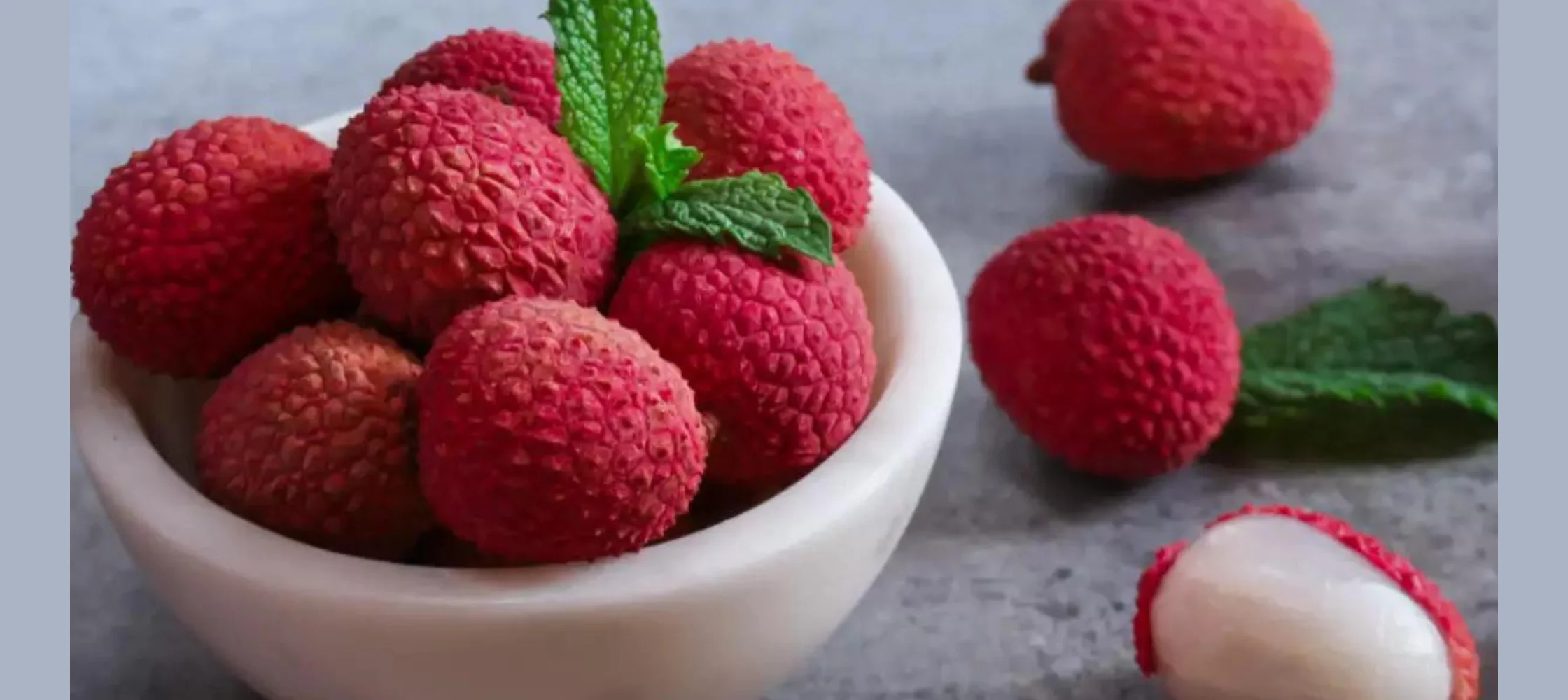
By:- Poonam Aggarwal and Sukhpreet Kaur
Sweet, flavorful, and juicy litchi is one of the popular summer fruits that contain an impressive list of essential nutrients. Although a major portion of litchi fruit is constituted by water (76–91%), it is a rich source of carbohydrates, proteins, crude fibers, minerals (magnesium, calcium, phosphorus), and vitamins (thiamine, niacin, riboflavin, and vitamin C). India is the 2nd largest producer of litchi in the world after China. It is one of the most famous fruit crops and is mostly cultivated in the Eastern part of the country. In India, 568,200 metric tons of litchis are produced annually from 93,300-hectare area. Litchi being specific to the climatic requirement, it is restricted to only a few states with 66% of the total production of the country recorded in Bihar, West Bengal and Jharkhand. Shahi is the most popular and best variety of Indian litchi because of its delicate aroma and flavour. The major litchi growing districts of Punjab are Pathankot, Hoshiarpur and Gurdaspur and these districts are contributing nearly 57.4, 14.3 and 13.9% respectively of the total area in the state.
Litchi fruits have very short shelf life making it difficult for distant marketing. At present, litchi is mostly consumed in fresh form only. There is an immense need to explore viable options for shelf life extension and value addition of litchi in both fresh and processed forms. This will help to utilize the produce during the season and make it available all round the year to consumers in various ready-to-eat forms. Considering the importance of litchi processing, Punjab Agricultural University has developed inexpensive technologies for the production of diverse litchi products, which can minimize the qualitative and quantitative deterioration of the produce after harvest. Following are the value-added products prepared from litchi:
Well-ripened fruits are selected. The fruits are washed under running water with gentle rubbing. Peel and stones are removed after cutting of fruit. Pulp from litchi fruit is extracted by a superfine pulper or screw type juice extractor. The extracted pulp is stored in plastic bins with the addition of potassium meta bisulphate @ 2000 ppm for further use in squash, nectar and ready to serve (RTS) beverages.
The extracted pulp is used for the preparation of squash. Sugar syrup is prepared in a stainless steel jacketed kettle by mixing sugar with water and citric acid as per recipe (Table 1). Litchi pulp is then added to the prepared sugar syrup which is then strained through a muslin cloth. TSS is adjusted to 48˚B and acidity to 1.25%. Potassium meta bisulphate @ 700 ppm is added in the squash after dissolving in small amount of squash and then mixing in bigger lot is done. The prepared squash is filled in the plastic bottles and sealed. The bottles are shelf stable up to one year at ambient temperature. Squash is diluted before consumption.
Table 1: Standardized recipes for litchi based beverages
|
|
|
||
|
|
|
|
|
|
|
|
|
|
|
|
|
|
|
|
|
|
|
|
|
|
|
|
|
Extracted litchi pulp (20%) is mixed with prepared sugar syrup. TSS is adjusted to 15˚B and acidity to 0.30%. The prepared nectar is thermally processed. Nectar is pasteurized at 85°C for 3 minutes and hot filled in to the glass bottles of capacity 200ml. The glass bottles are then pasteurized in boiling water for 20-30 minutes and cooled gradually to room temperature. The processed bottles are ready to consume and have a shelf life of one year at room temperature.
Extracted pulp is mixed with prepared sugar syrup. TSS is adjusted to 12˚B. RTS is thermally processed by pasteurizing at 85°C for 3 minutes followed by hot filling in pre-sterilized glass bottles. The glass bottles are then pasteurized in boiling water for 20-30 minutes and cooled gradually to room temperature. The processed bottles are shelf stable for one year at room temperature.
Litchi Pulp along with 20 percent sugar and 0.1 percent citric acid is concentrated at 80⁰C till 40°B is attained. The resultant mixture is then poured on a polythene sheet (smeared with fat) in a layer of thickness of about 4-5 mm. This sheet is placed in aluminum trays and dried in hot air cabinet dryer at 50 ⁰C for about 18 hours.
Processing converts perishable fruits and vegetables into stable products with longer life. The Department of Food Science and Technology provides hands-on training and facilities to Farmers, farm women, rural youths and progressive entrepreneurs for processing and value addition of litchi. These products are easy to prepare and can be scaled up for commercial ventures.
Writers are from the Department of Food Science and Technology, Punjab Agricultural University, Ludhiana
Your email address will not be published. Required fields are marked *
29 Jan, 2024
29 Jan, 2024
29 Jan, 2024
25 Jan, 2024